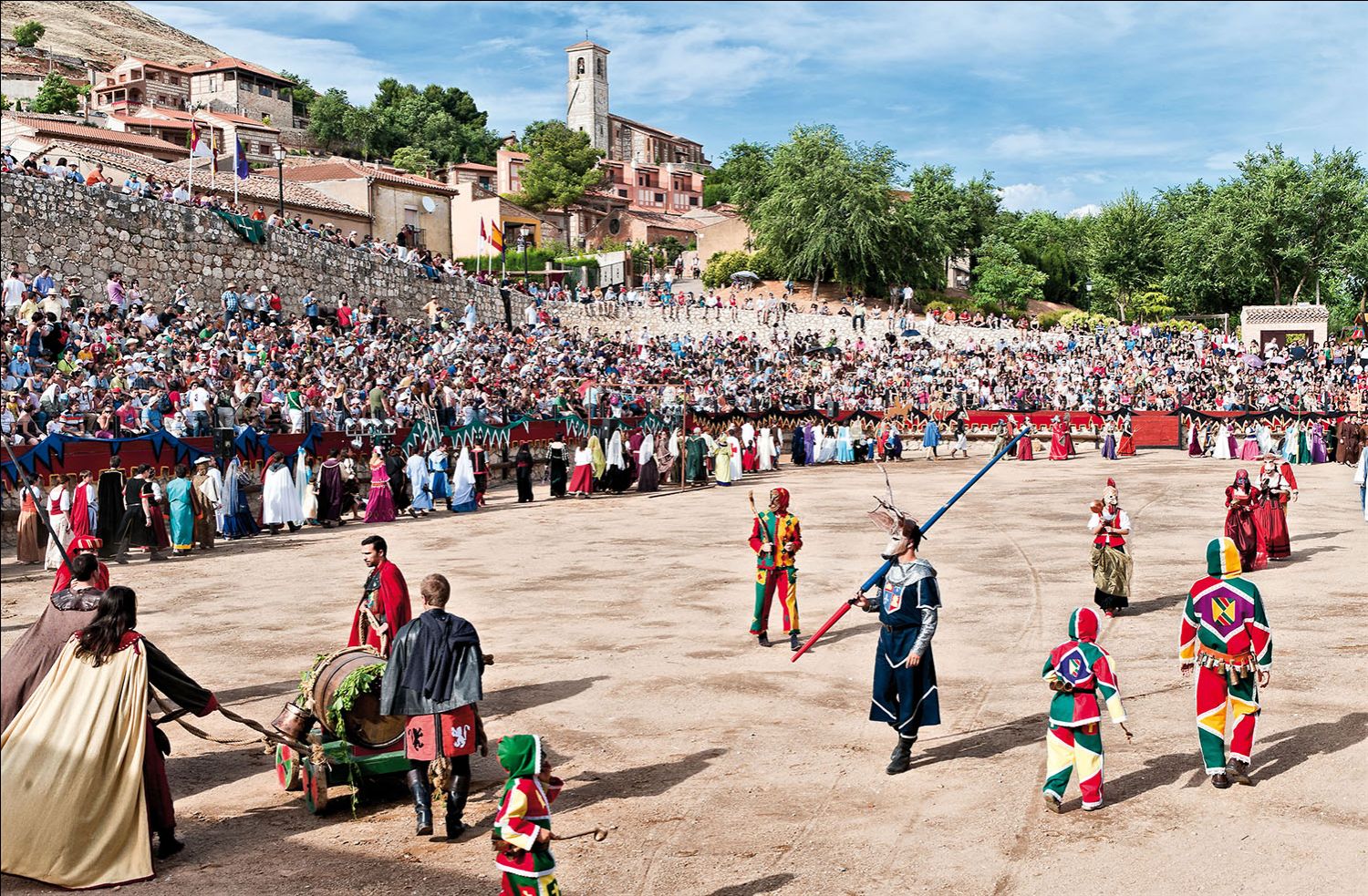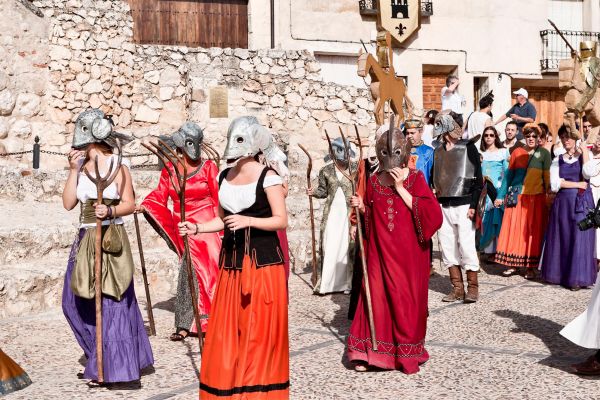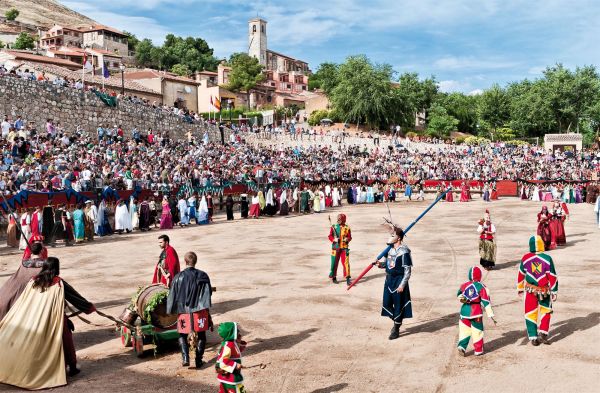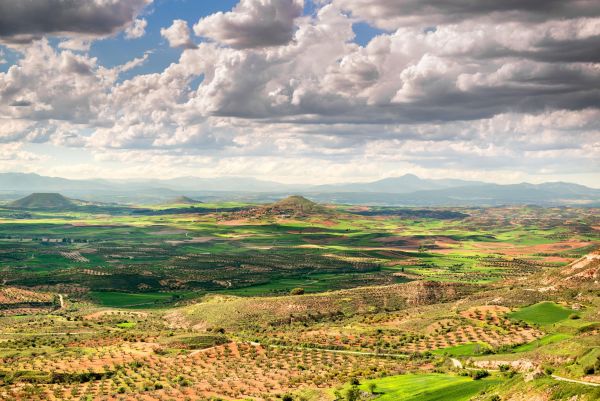Hita: The most authentic Medieval form
Guadalajara
The sweeping limestone plateaus to the north of Guadalajara, interrupted by river valleys with great natural richness, offer visitors routes away from cities and spots that remain etched on the memory.
From Guadalajara, take the A-2 road to reach Trijueque, a small town with a quiet, popular building, the remains of a defensive medieval tower that formed part of the wall and, next to the road, a 17th-century chapel. Stop here to visit the Lookout Point, which on clear days offers views of the Central System mountain ranges and some of their most iconic peaks, such as the towering, solitary Ocejón peak, the Lobo peak -the highest in Guadalajara province at 2,274 metres- and to the right, the Alto Rey peak. Extending before our eyes, there is a vast expanse of hills known as “the countryside”, the Badiel and Henares rivers valleys, and isolated hills such as the ones home to the towns of Hita and the larger Alarilla.
We need to retrace our steps towards Hita, around Torre del Burgo, on the banks of the Badiel river, where we’ll stop at the Sopetrán Monastery of Visigoth origin. Inhabited by Benedictine monks, it became the religious and cultural centre of these lands. It has traces of its medieval origins and the cloister arcades are of Herreran style.
Our next stop is nearby Hita. The town is nestled in the foothills of a mount with a perfect conical form. Throughout the Roman rule, Hita was an important guard post, and during the Reconquest, a transit zone between the two Spains: Christian and Muslim. It enjoyed its golden years in the Middle Ages, as a meeting point between Christians, Jews and Muslims, under the lord of the town, the Marquis of Santillana, Íñigo López de Mendoza, who ordered the construction of the wall, some stretches of which are still preserved.
We will take a look at the old town, with medieval influences, and follow the walls to where the Palenque (arena) is located. Here, every July, the Medieval Festival is held, offering an intense, attractive line-up taking us back through time with the recreation of tournaments and meetings that bring together thousands of visitors. The knights practice the old training for battle by throwing javelins, attacking quintain or picking up rings with their lances. Then come the combat on foot and horseback, with lances and swords.
Theatre is an important part of the Festival. In this case, the setting chosen is the square, with representations of medieval works written by Manuel Criado de Val, with noteworthy portrayals dedicated to Arcipreste’s Libro de Buen Amor (The Book of Good Love) describing the adventures of Mrs Edrna, Mr Melon and Trotaconventos. Masked characters and carnivalesque parades also play a major role in this festival. The pagan-origin ‘botargas’ (fancy dress) also roam the streets with their bells and sticks. They accompany the brotherhoods for the Fight Between Carnival and Lent, then re-enact a unique combat. A craft market, local cuisine and musical performances along with minstrels help create a magical, mysterious environment.
Our walk through the town continues by crossing the monumental St. Mary Gate, which takes us to the Archpriest of Hita square, the nerve centre of the municipality. Our stroll allows us to visit the ruins of the Church of St. Peter, which up to the Civil War was the heir to the Church of St. Mary as the main church; the church of St. John the Baptist, a fine example of the Mudejar Gothic, and with the noteworthy baptismal font carved in the base, the low choir stands and the paintings of the Descent from the Cross from the 17th century.
We also recommend visiting the traditional caves used as cellars until the Middle Ages. These cellars were home to a hidden city under the old town to store broths in old jars. On the hillside, the land again pierces into cave homes, the cellars, which contribute towards the town’s uniqueness.
To end our visit, we can go up –energy permitting– to the castle ruins, remains of what was once an imposing fortress, particularly due to its location. From the hilltop, there are impressive views of the surrounding area.
One last stage awaits to the north, in the small town of Beleña de Sorbe, with the beautiful, porticoed Roman church of St. Michael, elegant and with Cistercian influences, offers a wide range of iconography worthy of special attention.
May also be of interest to you
Castilla-La Mancha Tourism in 2023. All rights reserved.

 365
365
